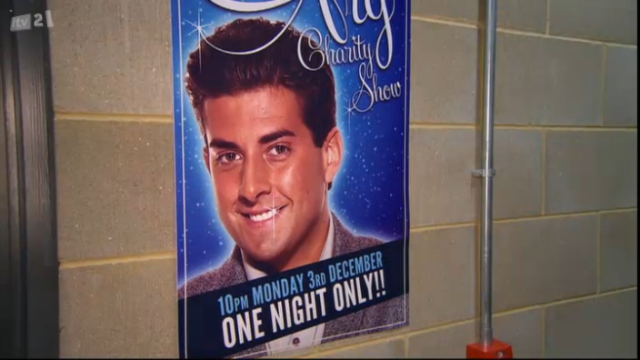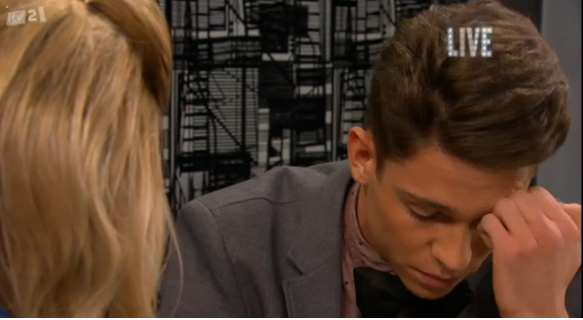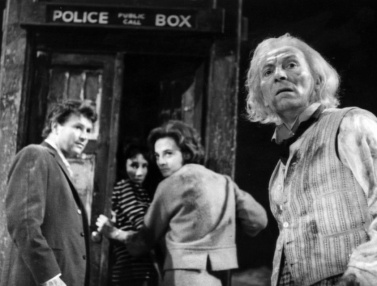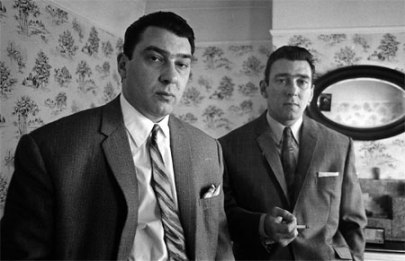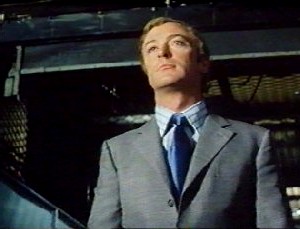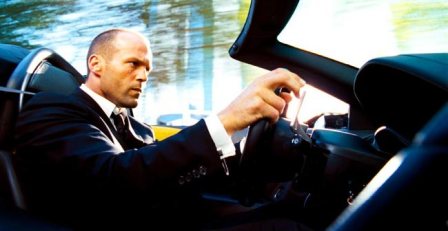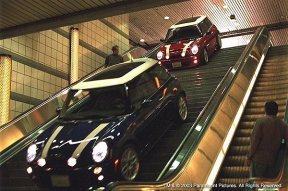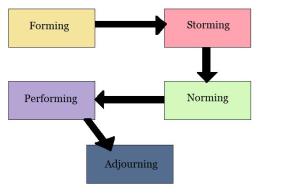This is an assignment I did for my ‘Popular Texts and Intertexts’ module earlier this year. It contains spoilers from all seven Harry Potter books.
Rowling’s popular book series, Harry Potter, has become a global phenomenon since the initial release of the first book Harry Potter and the Philosophers Stone in 1997. The series tells the tale of Harry Potter, a young orphan boy being raised, reluctantly, by his aunt and uncle. On his eleventh birthday, Harry discovers that he is a wizard and soon after, also finds he is famous in the wizarding world, having survived a killing curse placed upon him by an evil wizard, Lord Voldemort, who murdered his parents. The series follows Harry’s adventures and quest to try and defeat Lord Voldemort.
Despite the fact Harry Potter is regarded a series of children’s’ books, the theme of death is an integral part of the tale and the books get darker throughout the series. As well as the death of Harry’s parents and the deaths of other characters that grow close to Harry throughout the series, the antagonist, Voldemort, reflects the idea that the biggest fear to many is death itself, and as a character he is seen to go to any means necessary to save himself from death. Furthermore, despite the popularity of the series, there has been much criticism about the effects it has on its younger readers and the meanings of the messages portrayed throughout the series. Although Christian critics have scrutinised literature of the past for its association with magic and sorcery, J.K. Rowling is criticised for the inclusion of dark arts in her novels. Many religious groups, particularly in America, have tried to get the book banned in schools for the pagan imagery it represents, as they are seen as a possible danger to children. There have been suggestions that children consume the ideas of witchcraft and dark arts and conduct unnatural and un-Christian activity such as paganistic acts. It is evident that the core themes of the series are paganism and death. This essay looks to explore these themes and their importance within the series with reference to studies of children’s literature by Jenkins, Raglan, Bettelheim and Garry and El-Shamy.

There are seven books in the Harry Potter series
It is indisputable that the series is to be considered one of the most popular ever written, with a study conducted by The Guardian revealing that all seven books in the series are amongst the top ten most sold books between 1998 and 2010. When Rowling was asked in an interview why she thought the books were so popular she replied, “I don’t want to analyse that. I don’t want to decide that there’s a formula… It’s for other people to decide not me”. In addition to the amount of sales of the books, the series is also popular in the way that it has inspired children to read and write. Although, this has also been criticised due to the context in which children write as children often take on the role of witches and wizards on role playing websites. Jenkins (2006) explains:
“Within Christianity, there are some groups that embrace the potentials of the new participatory culture and others terrified by them” (pg.170)
This suggests that some people are against this participatory role playing platform on which children write as they believe they could start participating in paganistic life styles.
Scholar Bruno Bettelheim (1976) claims that children need fairytales to see both positive and negative impulses mirrored in order to understand that it is acceptable to reject negativity. This idea can be applied to Harry Potter, when Harry expresses that he does not want to be in Slytherin, one of the school houses, because of its notorious association with the dark arts. Because of the negative connotations to the house, Harry tells the sorting hat “not Slytherin” and it complies to his request. Harry rejects Slytherin because of its association with a purity of blood cult and their insistence that all witches and wizards should be “pure bloods”. This shows that even within the wizarding world there is prejudice, which Harry identifies and rejects immediately. This is comparable to racism, for example, in the real world. Arguably, because the negative themes are common in fantasy quest novels, particularly those aimed at children, it is essential that they see that they can see how to cope with it and the negativity in their lives. With children learning many life lessons through literature and secondary socialisation, it is an essential learning curve and a way in which to impart morals and values upon the reader. As children quite often face the death of loved ones, it is thought that the theme of death is important in the series in order to help the readers deal with issues they may face during their own adolescence.
Whilst paganism encompasses a vast and diverse community it is most commonly associated with the wicca-occult who practice witchcraft. Some Christians see the practices of pagans unorthodox because they are not seen as “natural” and “demonlike”. Harry’s aunt and uncle, the Dursleys, are arguably reflective of the critics of the series, being vocal of their disdain for the wizarding world and living in a very stereotypical version of the real world. They try to keep Harry from joining Hogwarts, in Harry Potter and the Philosophers Stone they are seen to react strongly to Hagrid inviting Harry to Hogwarts and go as far to admit:
“Your parents, well, they were weirdos, no denying it, and the world’s better without them in my opinion – asked for all they got, getting mixed up with these wizarding types” (p.46, Harry Potter and the Philosophers Stone)
Garry and El-Shamy (2005) claim that it is because of his magical power that the Dursley’s view Harry with contempt throughout his childhood. Additionally, they are very disapproving of the way in which Lily was murdered and prefer not to speak about Harry’s parents, however, in flashbacks throughout the series we see that Lily and Petunia were very close as children, before Lily gained magical ability. This further suggests their dislike of Harry is due to his abnormal abilities and activities during his upbringing, such as being able to talk to snakes. Overall, this shows that the theme of paganism is important in the Harry Potter series because the idea of witchcraft is central to the plot.

There are many apparent satanic aspects in the series
Paganists also look at the divine in nature and possess the view that the earth is living and is to be considered as a conscious being that we are able to communicate with. In the world of Harry Potter people in portraits move, plants, such as the Whomping Willow, carry their own awareness and walls and doors often disappear or move. The Room of Requirement is the best example of this idea, in Harry Potter and the Order of the Phoenix, it is used by Hogwarts students to practice their spells and it is further put to use in Harry Potter and the Deathly Hallows when it is used to hide students in danger of the Death Eaters. The idea that the room is living is confirmed by Seamus Finnigan in this scenario when he explains to Harry:
“It’s all down to Neville. He really gets this Room. You’ve got to ask it for exactly what you need – and it’ll do it for you” (p.465, Harry Potter and the Order of the Phoenix)
The room is viewed by the students as a conscious being and Neville is able to communicate with it better than he can communicate with many of the other children at Hogwarts. This shows that the paganistic ideal of a community practicing something non-Christian and the idea of the divinity in nature are at the forefront of the Harry Potter series. The natural element of the divinity of nature is seen in many other children’s stories, including the His Dark Materials trilogyand C.S. Lewis’ The Lion, The Witch and the Wardrobe. These ideas add to the escapism that the novels provide and are certainly part of the appeal for children. It is important and central to the plot and the series would not be the same without these themes and ideas, as they often allow the narrative to move forward.
The theme of death is integral to the series and the death of Harry’s parents is the driving force of the plot. Harry’s quest is initiated following their murder as Harry’s mother Lily’s protection and sacrifice for Harry leaves Voldemort fighting for his own life. Their deaths were a result of a prophecy set out stating that:
“Either must die at the hand of the other for neither can live while the other survives. … The one with the power to vanquish the Dark Lord will be born as the seventh month dies…”
This links to the idea that the Harry Potter series is, ultimately, a quest tale, with Harry’s quest being plotted out for him with the creation of the prophecy. Despite not knowing about the truth of his parents’ death, he is given the label of “the chosen one” without any knowledge of the wizarding world. Furthermore, Harry is intrigued by the death of his parents and is vocal about his desire to go to Godric Hollow, where they were killed. His parents are seen to be a huge influence of his actions, despite him having little remembrance of them. When Harry comes close to death himself he thinks of his mother’s final moments:
“But a pair of strong, clammy hands suddenly wrapped themselves around Harry’s neck. They were forcing his face upwards… he could feel its breath… it was going to get rid of him first… he could feel its putrid breath… his mother was screaming in his ears… she was going to be the last thing he ever heard” (Pg. 281, Harry Potter and the Prisoner of Azkaban)
A possible interpretation for why Harry hears her sacrificing himself is, perhaps, that he feels guilty that he comes so close to death after her sacrifice to him. This further emphasises the importance of death as a theme in the series.
As a character, Harry possesses the main qualities of the archetypal hero, having faced many trials and tribulations in his life, including death of loved ones, resulting in the flawed characteristics common to characters featuring in a quest tale. As Jenkins (2006) states “the image of a special child being raised in a mundane (in this case, muggles) family and discovering their identities as they enter school age is a classic theme of fantasy novels and fairy tales” (pg. 174). Furthermore, Raglan (1965) supports this idea, particularly the idea that the character becomes a hero when he reaches adolescence claiming “the most surprising things happen to our hero at birth; the most surprising things happen to him as soon as he reaches manhood” (p.152). This is shown in the Harry Potter series which could also be seen as a tale of growth, as the main narrative is set as Harry reaches adolescence. Furthermore, another important quality of a hero is to have similarities with his enemy, when Voldemort was unable to kill Harry he passed on some of his own powers to him including the ability to read each other’s minds and thoughts. It is quite common for heroes in quest tales and fantasy stories to have these qualities and it can be seen in other texts, such as Gandalf and Saruman in Lord of the Rings and Glinda and The Wicked Witch in The Wonderful Wizard of Oz. This is discussed by Catherine and David Deavel in Character, Choice and Harry Potter who state:
We learn there the striking similarities between Harry Potter and Voldemort. Both are half Muggles who were mistreated by Muggles. They both have similar gifts of resourcefulness, determination, the gift of parseltongue, and even a certain disregard for rules; yet Dumbledore is adamant that what makes Harry different, and what made the Sorting Hat refrain from putting him in Slytherin, is his own choice. (pg.53)
This could suggest that a stereotypical hero has to understand his enemy and not fear being defeated, again, emphasising the importance of the theme of death in quest tales, in particular, the Harry Potter series.

Harry is seen as the hero of the wizarding world
The theme of loss is prominent throughout the series, with Harry not only having to face death himself but also having to deal with the majority of his mentors meeting an untimely death at the hands of Voldemort. He also has to rescue many of his loved ones from death. Significantly, many of his close friends and mentors who die throughout the series are the closest thing he has to a father figure since the death of his parents. He is greatly affected when Dumbledore and Sirius Black are killed and often, because they are killed during battles, has no time to grieve. Rowling often chooses to reflect this through the syntax in which she writes, as identified when Harry witnesses Sirius’ murder.
“Harry heard Bellatrix Lestrange’s triumphant scream, but knew it would mean nothing – Sirius had only just fallen through the archway, he would reappear from the other side any second… But Sirius did not reappear” (Pg. 711, Harry Potter and the Order of the Phoenix)
The way in which Rowling writes almost reflects what Harry is thinking, in a fast paced manner. The fact that Harry has little time to grieve the death of his loved ones could also be associated with the idea that Harry plays the part of a bewildered hero who has had to grow up quickly, before his time. The actions of Harry and the expectations placed upon him are not those that would usually be associated with a school aged child. It is also noticeable that it isn’t until the fourth book that we see Harry in a truly adult light. Coincidently, this is also the novel in which Voldemort rises back to power. As well as witnessing the death of many of his close friends, he also has to rescue many of his loved ones from death as seen in Harry Potter and the Deathly Hallows. Harry is seen mirroring the actions of his mother by sacrificing his own life to save his friends who are in the Battle of Hogwarts. Even as Voldemort listens to Harry explaining his actions he is left bewildered and still does not understand how love and sacrifice can protect loved ones from death.
“I was ready to die to stop you hurting these people… I meant to, and that’s what did it. I’ve done what my mother did. They’re protected from you. Haven’t you noticed how none of the spells you put on them are binding? You can’t torture them. You can’t touch them. You don’t learn from your mistakes, Riddle, do you?’ (Pg. 591, Harry Potter and the Deathly Hallows)
Voldemort does not understand love, which ultimately leads to his defeat, emphasising how the theme of death is significant in the series.
Furthermore, there is the issue of whether death is really final in the wizarding world. Through magic, Harry is able to see, and communicate with, many wizards who have already died. The most obvious case of this is the ability for some wizards and witches to remain as ghosts. In Harry Potter and the Order of the Phoenix Nearly Headless Nick, the Gryffindor house ghost reveals that ghosts form when one is scared of death. He explains to Harry “I chose to remain behind. I sometimes wonder whether I oughtn’t have… well that is neither here nor there… in fact, I am neither here nor there…” (p.759). This suggests that it is those who fear death that remain as ghosts. In Harry Potter and the Goblet of Fire when Harry and Voldemort’s wands connect, those who Voldemort has murdered reappear and offer Harry help and advice; this is the first time he truly talks to his parents. Additionally, when Dumbledore is murdered, he leaves Hermione a collection of children’s stories, including The Tale of Three Brothers which holds the moral that you suffer if you try to fight death. Whilst this gives the suggestion that death is final and cannot be beaten, the tale also introduces the Resurrection Stone, which allows the owner to bring back those from the dead. Although the original user of the stone in the story is full of “hopeless longing” (pg. 332), Harry successfully uses this stone when going to sacrifice himself so that he has the support of his loved ones who have already died. The fact that there is always a chance that, in the wizarding world, dead loved ones can reappear shows the importance of the theme in the Harry Potter series as dead characters can quite easily still change the plot of the novel.
As the main antagonist, Voldemort’s main fear is seen to be death itself. He decides to try and shield himself from death by creating horcruxes, which is, in essence, splitting his soul. Professor Slughorn explains to Harry how this happens in Harry Potter and the Half Blood Prince:
“The supreme act of evil. By committing murder. Killing rips the soul apart. The wizard intent upon creating a Horcrux would use the damage to his advantage: he would encast the torn portion” (Pg. 465)
This shows the only way to save yourself from death is to kill another. Voldemort’s main downfall is that he does not understand love or loss and does not understand, or learn from, his mistakes. This ultimately leads to his death, because he does not realise that love and sacrifice counter-acts death and that Harry’s sacrifice of his own life for his loved ones protects his friends from the spells cast again them. Significantly, Harry never commits murder and it is Voldemort’s own spell which kills himself.
“Tom Riddle hit the floor with a mundane finality, his body feeble and shrunken, the white hands empty, the snake-like face vacant and unknowing, Voldemort was dead, killed by his own rebounding curse, and Harry stood with two wands in his hand, staring down at his enemy’s shell” (Pg. 596, Harry Potter and the Deathly Hallows)
This shows Harry’s integrity and that he conforms to his heroic role. Overall, it is clear that if Voldemort wasn’t scared of death, he would not have been defeated in the manner that he was and the novels would be very different; this supports the idea that the theme of death is very important to the series.
In conclusion, paganism and death are central to the events in the Harry Potter series. As the wizarding world that is presented to the reader encompasses many paganistic ideas, it is clear that it is very important to the series that it is set in that environment. Furthermore, the idea that the world is living is a further form of escapism that uses paganistic ideals to allow readers to experience real elements of the world in a different light. However, death is perhaps the most important theme in the series as it is central to the development of Harry as a character. If he had not defeated death itself, and was not “the boy who lived”, the plot would never take place. Also, having to cope with the death of loved ones allows Harry to develop as a person and truly understand death – an accomplishment that his enemy, Voldemort, never achieves which ultimately leads to his downfall.
3218 words (without quotes)

The cast of the film adaptation of Harry Potter
Bibliography
- Bettelheim, B (1976). The Uses of Enchantment: The Meaning and Importance of Fairy Tales. New York : Knopf.
- Deavel, C & Deavel, D. (2001). Character, Choice and Harry Potter. A Culture of Life.
- Frank Baum, L (1900). The Wonderful Wizard of Oz. United States: George M Hill.
- Garry, J & El-Shamy, H, (2005). Archetypes and Motifs in Folklore and Literature: A Handbook . London: M. E. Sharpe Inc.
- Jenkins, H. (2006). Why Heather can write: media literacy and the Harry Potter Wars. Convergence Culture: Where old and new media collide. 169-205.
- Lewis, C. S. (1950). The Lion, The Witch and the Wardrobe. London: Geoffrey Bles.
- Nel, P. (2001). J.K. Rowling’s Harry Potter novels: a reader’s guide. London: Continuum International Publishing Group.
- Pullman, P. (1995). Northern Lights. London: Scholastic Point.
- Rowling, J.K. (1997). Harry Potter and the Philosophers Stone. London: Bloomsbury.
- Rowling, J.K. (1998). Harry Potter and the Chamber of Secrets. London: Bloomsbury.
- Rowling, J.K. (1999). Harry Potter and the Prisoner of Azkaban. London: Bloomsbury.
- Rowling, J.K. (2000). Harry Potter and the Goblet of Fire. London: Bloomsbury.
- Rowling, J.K. (2003). Harry Potter and the Order of the Phoenix. London: Bloomsbury.
- Rowling, J.K. (2005). Harry Potter and the Half Blood Prince. London: Bloomsbury.
- Rowling, J.K. (2007). Harry Potter and the Deathly Hallows. London: Bloomsbury.
- Tolkein, J. R. R. (1954). The Lord of the Rings. United Kingdom: Geo, Allen & Unwin.

